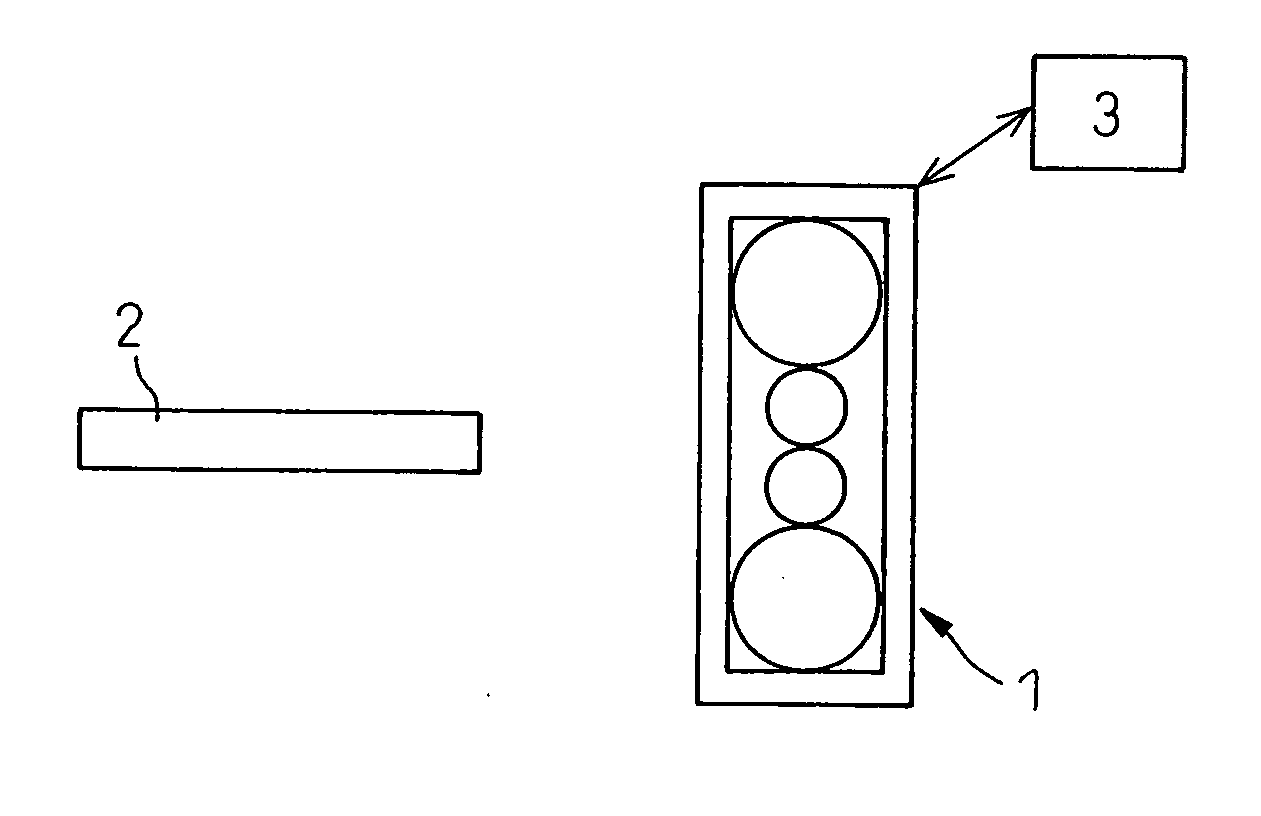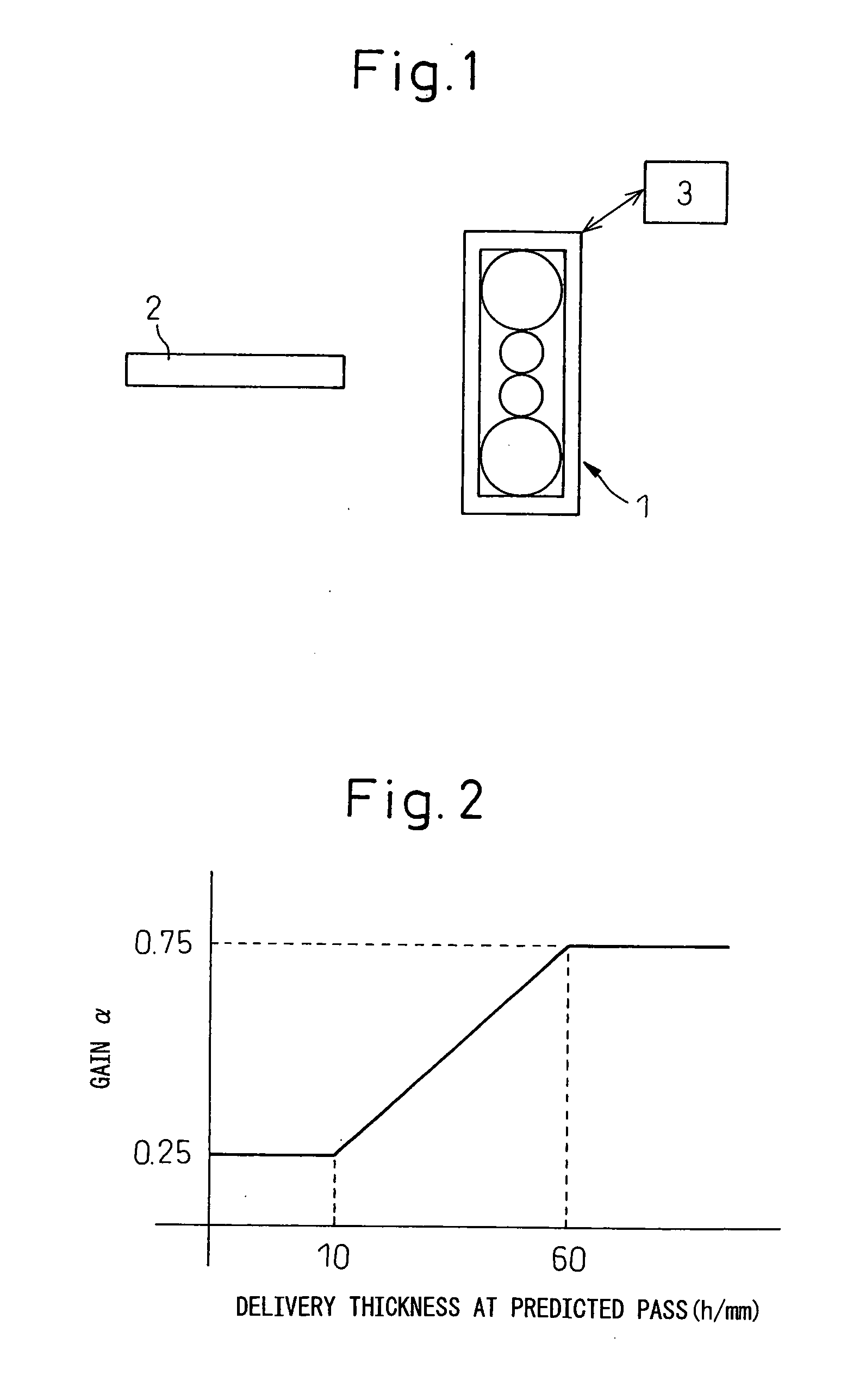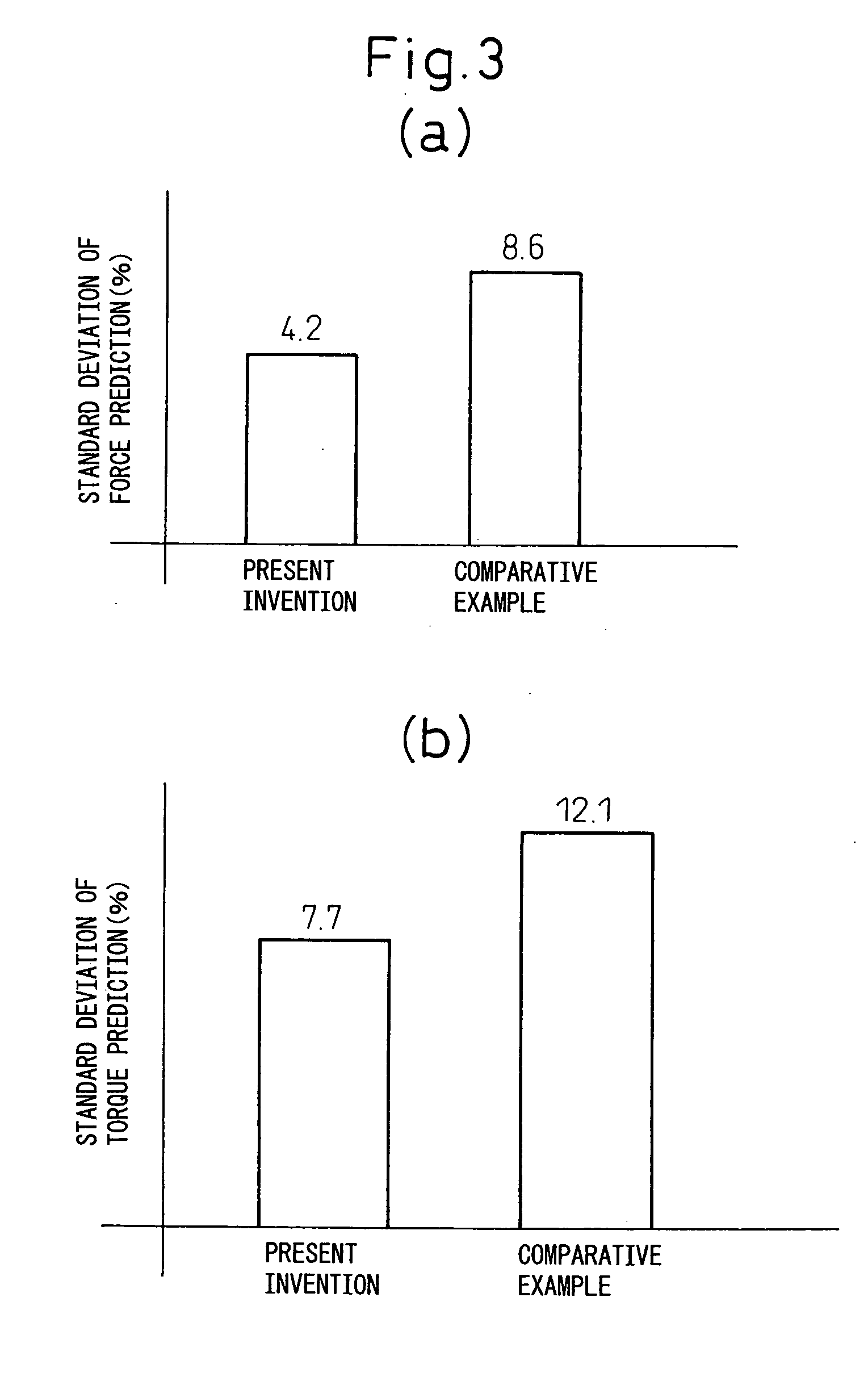Learing method of rolling load prediction for hot rolling
a learning method and rolling load technology, applied in adaptive control, shaping safety devices, instruments, etc., can solve the problems of easy dispersal, inability to predict the actual pass of rolling load, and the trend of rolling load prediction error is not always constant, so as to and improve the accuracy of rolling load prediction
- Summary
- Abstract
- Description
- Claims
- Application Information
AI Technical Summary
Benefits of technology
Problems solved by technology
Method used
Image
Examples
example 1
[0056]Below, an example of the present invention will be explained based on the drawings. Note that, the numerical values, functions, etc. used in the following examples are nothing more than illustrations for explaining the present invention. The present invention is not limited to the following examples. Note that component elements having substantially the same functional configurations in the Description and Drawings are assigned the same reference signs and overlapping explanations are omitted.
[0057]Consider an example applying the present invention to inter-pass learning for rolling force prediction and rolling torque prediction in reverse multi-pass type rolling by a rolling mill 1 shown in FIG. 1. In the rolling mill 1, the stock 2 has already been rolled by an (i−1)-th pass and is about to be rolled at an i-th pass. At this time, the rolling force Pexpi-1 and rolling torque Gexpi-1 at the (i−1)-th pass and the entry thickness Hi-1, the delivery thickness hi-1, and the rolli...
example 2
[0076]Example 2, like Example 1, applies the present invention to inter-pass learning of rolling force prediction in reverse type multi-pass rolling by the rolling mill 1 shown in FIG. 1. In the present example, as shown in formula (7), the gain α was changed in accordance with the referred to the delivery thickness h at the actual pass.
α={0.2(h10)0.3(10≤h15)0.4(15≤h30)0.5(30≤h50)0.6(50≤h75)0.7(75≤h100)0.8(100≤h)(7)
[0077]Note that, the relationship between the delivery thickness h at the actual pass and gain α based on formula (7) is shown in FIG. 4 as well. Further, at each rolling pass, the learning coefficient at the rolling force prediction at the following rolling passes was updated so as to correct the draft schedule and crown control amount at the subsequent passes. In this way, a hot steel plates were rolled with initial thickness of 40.0 to 200.0 mm, delivery thickness at the final pass of 4.0 to 150.0 mm, a width of 1200 to 4800 mm, and a total number of rolling passes of ...
example 3
[0082]Example 3 is an example of application of the present art to a tandem rolling process of hot strip with a final stand delivery thickness of 1.0 to 20.0 mm.
[0083]As shown in FIG. 8, consider the example of application of the present invention to inter-pass learning of rolling force prediction in tandem rolling in a group of rolling mills 4 comprised of five rolling mills 4a to 4e. In the group of rolling mills 4, the stock 2 is already rolled by the first stand 4a and is about to be rolled by the second stand 4b to the fifth stand 4e. At this time, the rolling force Pexp1 at the first stand, the entry thickness H1 of the stock 2, the delivery thickness h1, and the rolling temperature T1 are stored in the processing unit 3. Further, the processing unit 3 also stores the work roll radius R of the stands 4a to 4e of the group of rolling mills 4 and the material components and width w of the stock 2.
[0084]Here, it may be considered to use the prediction error of rolling force at th...
PUM
| Property | Measurement | Unit |
|---|---|---|
| width | aaaaa | aaaaa |
| width | aaaaa | aaaaa |
| thickness | aaaaa | aaaaa |
Abstract
Description
Claims
Application Information
 Login to View More
Login to View More - R&D
- Intellectual Property
- Life Sciences
- Materials
- Tech Scout
- Unparalleled Data Quality
- Higher Quality Content
- 60% Fewer Hallucinations
Browse by: Latest US Patents, China's latest patents, Technical Efficacy Thesaurus, Application Domain, Technology Topic, Popular Technical Reports.
© 2025 PatSnap. All rights reserved.Legal|Privacy policy|Modern Slavery Act Transparency Statement|Sitemap|About US| Contact US: help@patsnap.com



